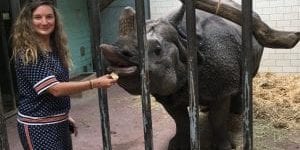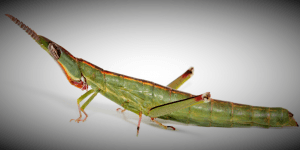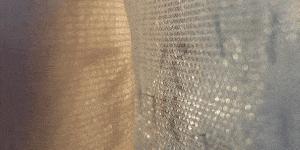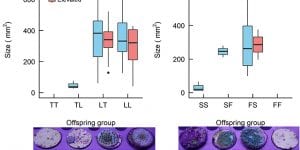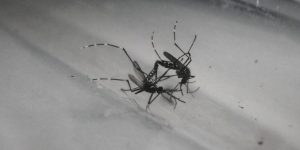Category: Blog
-
Zoos – the good, the bad and the ugly
Words: Samantha Ward We’re going to the zoo, zoo, zoo. How about you, you, you…?” Perhaps you remember singing the song when you were a child. If you do, you probably have it stuck in your head now! If you don’t, I’m sure you remember those fun-filled zoo days watching gigantic elephants spraying themselves with […]blogs.unimelb.edu.au/pearg/2018/11/01/zoos-the-good-the-bad-and-the-ugly
-
The diversity of Aussie grasshoppers | Part two
Words and images: Vanessa White Some important lessons learnt and new questions around Vandiemenella laboratory rearing In the previous grasshopper blog, I reported “reasonable success with room for improvement” in our attempts to rear Vandiemenella grasshopper nymphs in the laboratory. Alternative housing is an important focus for improvement, but a discussion with Mike and Ary […]blogs.unimelb.edu.au/pearg/2018/10/15/the-diversity-of-aussie-grasshoppers-part-two
-
The diversity of Aussie grasshoppers | Part one
Words: Vanessa White Images: Mike Kearney and Vanessa White Why Australian grasshoppers are fantastic research subjects: The Morabine grasshoppers (subfamily Morabinae) commonly known as “matchstick grasshoppers” are endemic to Australia and comprise 40 genera and around 250 species (Rentz 1996). Both sexes are wingless with a characteristic matchstick-like appearance. Some Morabine species have been studied […]blogs.unimelb.edu.au/pearg/2018/10/08/the-diversity-of-aussie-grasshoppers-part-one
-
Marking mosquitoes
Words: Mengjia Liu Images: Perran Ross and Mengjia Liu It is important to study the fitness of different colonies of Wolbachia-infected mosquitoes, and also of interest to test fitness effects within the same colony when mosquitoes are maintained under different conditions. As we have been maintaining uninfected mosquitoes under laboratory conditions for over 25 generations, […] -
BACK FROM THE BRINK | CROWDFUNDING FOR THE GENETIC RESCUE OF EASTERN BARRED BANDICOOTS
Words: Anne Aulsebrook Cover image: Mount Rothwell Conservation and Research Centre An article published in 1934 describes the flavour of bandicoot stew. ‘After chewing a mouthful I gave up.’ The writer states, ‘The stew tasted like roots. I have not sampled stewed bandicoot since.’ At the time of the article, bandicoots in Australia were already […] -
The economic benefit of biodiversity in agriculture
Words: Linda Thomson Image: Zagrammosoma latilineatum by Elia Pirtle Along with sustainability, biodiversity is a current catchword. Our work demonstrating the benefits of non crop vegetation on increasing biodiversity and especially “beneficials’ which contribute to pest control in crops. Enthusiasm for the project is shown by the excellent attendance at a recent workshop – report of […]blogs.unimelb.edu.au/pearg/2018/09/07/the-economic-benefit-of-biodiversity-in-agriculture
-
A new and unusual Wolbachia bacteria from Drosophila flies limited to the female sex
Words: Ary Hoffmann Cover image: Perran Ross As Wolbachia bacteria that live inside insect cells continue to be discovered and studied in detail, our appreciation of the diverse ways in which these bacteria interact with their hosts continues to expand. In past work we have found Wolbachia that cause embryo death when infected males mate […] -
Probing the void for blood
Words and video: Perran Ross I recently filmed one of our mosquito colonies trying desperately to reach my arm through their enclosure. The video has been posted on Reddit by a third party and received enormous attention with over 4.5 million views in its first nine hours. To make the video, I held my arm […]blogs.unimelb.edu.au/pearg/2018/07/10/probing-the-void-for-blood
-
New paper | Interspecific hybridization may provide novel opportunities for coral reef restoration
A new paper is out in Frontiers in Marine Science – article link A nicely digestible review of the article is available at Ocean bites here -
Large male mosquitoes unluckier in love
Words and images: Perran Ross Large male mosquitoes may have more trouble than smaller males in finding a partner. In a new study, we find that small female mosquitoes tend to avoid larger males, preferring to mate with smaller ones. In this study, now available as a pre-print on bioRxiv, we performed laboratory experiments to […]blogs.unimelb.edu.au/pearg/2018/05/31/large-male-mosquitoes-unluckier-in-love
Number of posts found: 79
